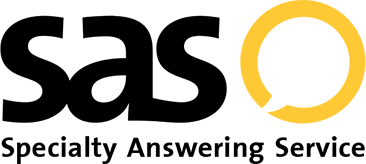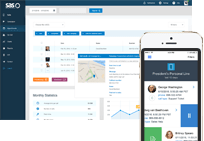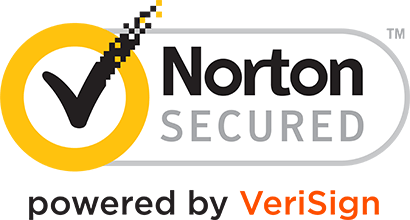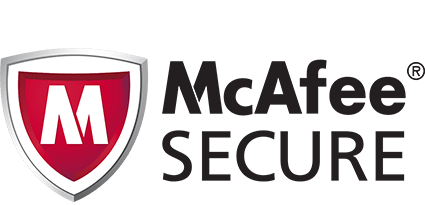- Log In
- Support
- Company
- Contact Us
- Live answers @ 1-888-532-4794
Call Center Training Program Part 3: Materials and Modules
How do you take classroom training, soft skills essentials, role play, and employee shadowing, and turn it into magic when new hires pick up their first call? Have faith in the tools and education that your training team provides before an operator puts on a headset? Yes. Trust that you have hired someone who can utilize those tools in a way that is mutually beneficial for both the call center and your clients? Of course. Effective training and supervision are central to all employees’ success. But when was the last time you sat in on your own training? When was the last time you saw an operator receiving supportive, one-on-one coaching for a specific issue? Faith and trust are great. However, seeing is believing.
A considerable amount of accountability for how things go when a new CSR hits the floor falls on trainers and supervisory staff. If you’re managing a call center, it’s your responsibility to keep things moving like a well-oiled machine. That means you’ll need to check in on team leads, and ensure that floor supervisors are closely monitoring progress by listening in on calls, providing coaching when necessary, tracking Key Performance Indicators, and making themselves available for any questions that may come up during the course of the day. Do new hires know exactly where to find trainers and supervisors when they encounter a problem? Do they fully understand the escalation process if they find themselves in too deep? And is every level of management approachable and ready to listen when issues arise? If the answer is yes to all three of those questions, then CSRs have nowhere to go but up.
Anyone who has ever worked at a hectic answering service knows that handling hundreds of calls for businesses that you know nothing about will take some getting used to. And it is certainly up to the employee to make the most of what they’ve learned. That being said, we’ve put together one more training element that all new hires should be given the minute they sit at their stations. The job aids below condense a lot of training into a handful of posters that can be pinned up and referenced often, presenting helpful hints when the CSR doesn’t have the answers, when the caller is becoming angry, when empathy is warranted, and more. Having these job aids around for quick reference will enable operators to coach themselves past little hurdles and learn to be as self-sufficient as possible. The more confidence they gain with each call will make magic happen. Maybe not the first day on the job, or even the first week. But with a little patience and the right tools, every operator has the potential for excellence.
Download Materials For Call Center Training Modules
Once you and your staff have gone through the training outlined in the previous installments of this post, the next step to ensure data retention and implication is to provide your staff with a visual guide that they can refer to while at their desks. While it wouldn’t be effective to print out the whole guide, we’ve highlighted certain modules that we feel would be most beneficial to keep handy for quick reference.
#1. BLAST OFF
Program Materials: Download and print the Blast Off Poster to place on the virtual receptionists’ stations.
- Be friendly and empathetic
- Listen carefully to capture every detail
- Acknowledge the caller’s concerns
- Speak slowly and clearly
- Take ownership of your actions
- Offer to take a message
- Follow the best path
- Focus on the issue at hand
#2. De-Escalation by Situation
Knowing how to de-escalate situations and calm down angry callers is an important trait for all customer service reps to learn.
Program Materials: Download and print the De-Escalation by Situation Poster for your agents to use as a quick reference guide on how to best handle hostile situations. Some examples on the poster include:
- Reason: Called multiple times
- Response: I’m sorry, I know this is frustrating. I’m not quite sure why you haven’t received a response yet, but sending another message may do the trick. So, let’s get your information to the office and I’ll mark it as urgent to see if we can speed up that call back.
- Reason: Refund has not been processed
- Response: I’m sorry, I know this is frustrating. I’m not quite sure why you haven’t received your refund yet, but sending another message may do the trick. So, let’s get your information to the office and I’ll mark it as urgent to see if we can speed up that call back.
#3. De-Escalation Conversation
The examples below provide a flow of conversation that you can use when the caller is becoming angry, frustrated, or upset.
Program Materials: Download and print the De-Escalation through Conversation Poster which serves as a quick reference guide on appropriate phrases to say to upset callers.
- Apologize: I’m sorry to hear that
- Empathize: It sounds like this has been really difficult for you
- Act: But I’ll do my best to help
- Thank: Thank you for letting us know about this issue
- Resolve: And I’ll make sure this gets to the right person
#4. Transitional Phrases
Dead air can be awkward. Transitional phrases are words that help carry a conversation from one thought to another, one subject to another, or one sentence to another.
Program Materials: Download and print the Transitional Phrases Poster which serves as a quick reference guide on appropriate phrases to say to a caller while you’re navigating through the customers script in the background.
- No problem. Let me get a message started for you.
- It will just take a moment for me to type this up. How is your day going so far?
- If you don’t mind, I just want to read this back to you to make sure I have all of the details.
- I definitely understand where you’re coming from. Let’s see what we can do about this.
#5. What Makes a Great Operator?
We all want great operators answering our phones. The secret is just sticking to the FACTS!
Program Materials: Download and print the FACTS Poster to use as a handout during your call center training program and for agent workstations.
- F: Be Friendly and courteous
- A: Use Active Listening skills
- C: Stay Calm (even when the caller is not)
- T: Use a pleasant Tone of Voice
- S: Use a Smooth Transition to avoid dead air
#6. When you Don’t Have the Answer
Below are some phrases to use when the script or FAQs do not fit the reason for the call.
Program Materials: Download and print the When You Don’t Have The Answer poster to use as a handout during your call center training program and for agent workstations.
- You know, I’m not sure about that. Let me take down your information, and I’ll look into it for you.
- I don’t have that information in front of me, but I’d be happy to have someone follow up with more details.
- That’s a great question. Let me send a message along for you so that we can get you the right information.
#7. When Your Emotions are Escalating
Empathy is a key to being a great call center agent. You just need to stay CALM!
Program Materials: Download and print the CALM Poster to use as a handout during your call center training program and/or a poster for agent workstations.
- C: Change your perspective (put yourself in their shoes)call center
- A: Adjust your attitude (use a softer approach)
- L: Listen to their concerns (focus on the issue at hand)
- M: Move towards resolution (steer the call in a positive direction)
Categories
- Advice (32)
- Answering Service 101 (18)
- Best Practices (10)
- Call Center Jobs (6)
- Call Center Software (20)
- Comparison (2)
- Customer Service (30)
- Funny (31)
- Holidays (19)
- Industry Hacks (19)
- Infographics (53)
- International (1)
- Medical (8)
- News (12)
- Phone Etiquette (2)
- Phones (14)
- Pricing (8)
- Quizzes (3)
- Receptionist (11)
- SAS Products (29)
- Scripting (4)
- Services (5)
- Small Business (25)
- Starting Up (7)
- Tips and Tricks (19)
- Uncategorized (1)
- Videos (19)
- Workplace (6)
Recently writen
- Call Center Script Best Practices: Advanced Script Block Tips to Optimize Your Answering Service
- January 2025 Release Notes – Adjustments to Call Details Timeline, New Scripting Updates, Live Transcription, and more!
- April 2024 Release Notes – Voicemail Greetings, Ability to Access Websites With a Username and Password, and more!
- March 2024 Release Notes – New Add-On, Settings Revamp, and more!
Follow Us
How about a demo?
We'll show you how our web portal works and answer any questions you have about SAS.
Schedule a demo







